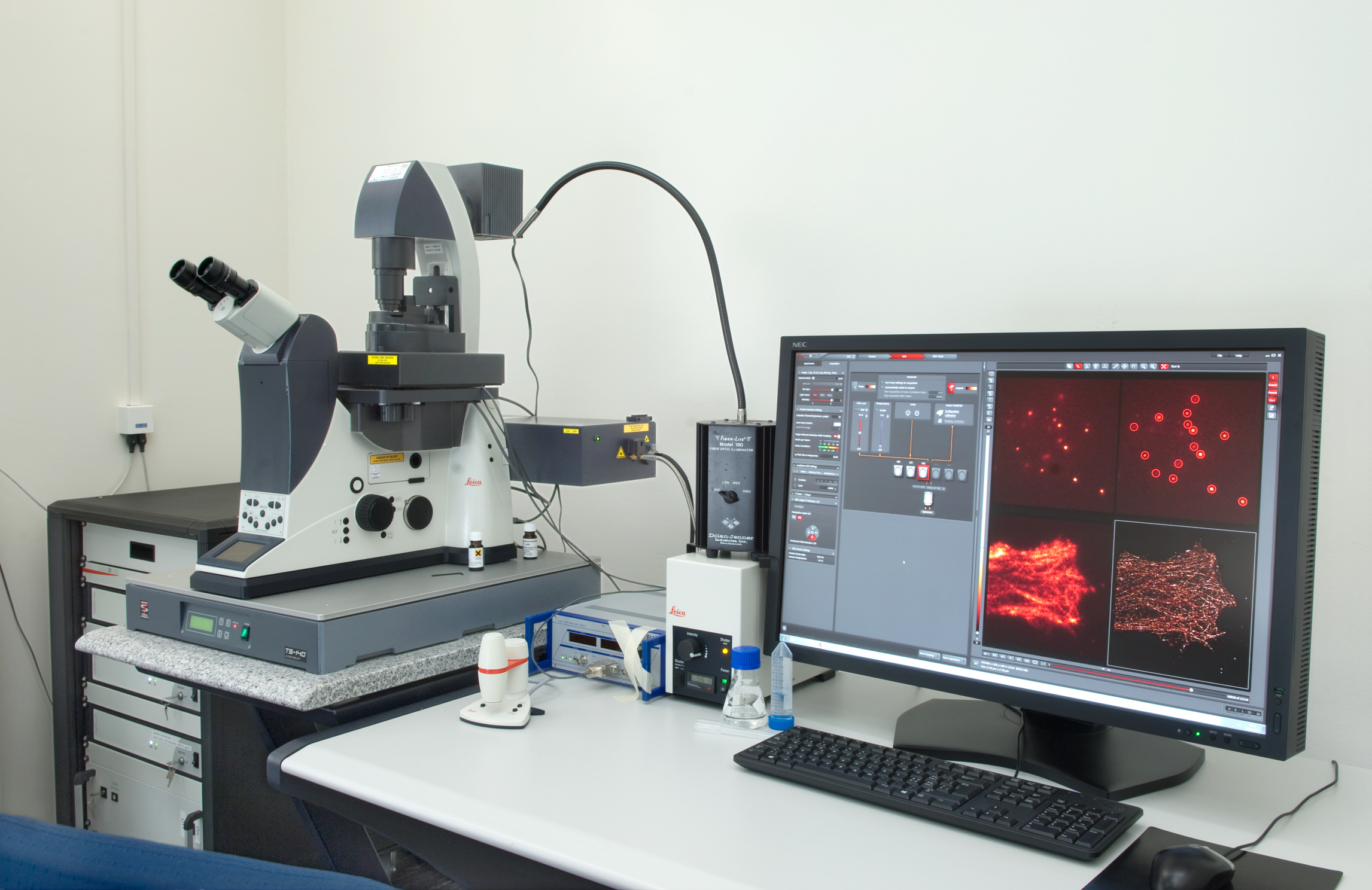Navigation auf uzh.ch
Navigation auf uzh.ch

The Leica GSDIM (Ground State Depletion followed by individual molecule return) microscope consists of an inverted widefield fluorescence microscope combined with a very sensitive EMCCD camera for single molecule detection. Fluorescent molecules can be excited using 3 different laser lines. This single molecule excitation and detection scheme allows the acquisition of super resolved images using the STORM (STochastic Optical Reconstruction Microscopy) principle. Compared to standard widefield fluorescence microscopy, this technique offers a dramatically increased lateral (20nm) and axial (50 nm) resolution. For experiments in membranes, and in the presence of high fluorescence background, TIRF (Total Internal Reflection Fluorescence) imaging is also available.
University Zurich, Irchel Campus, Room Y42-H-93.
Follow this link to apply for an introduction to the microscope.
Microscope
| Name | Magnification | NA | Immersion | WD (mm) |
|---|---|---|---|---|
| HCX PL APO | 10x | 0.4 | Air | 2.2 |
| HCX PL APO CS | 20x | 0.7 | IMM | 0.26-0.17 |
| HCX PL APO CS2 | 63x | 1.3 | glycerol | 0.3 |
| HCX PL APO (GSD/TIRF) | 160x | 1.43 | oil | 0.07 |
IMM = multi immersion (either water, glycerol or oil)
| Name | Mode | Excitation Range | Excitation Filter | Dichroic | Emission Filter |
|---|---|---|---|---|---|
| 488 HP-T | GSD/TIRF | blue | BP 488/10 * | 496 | BP 555/100 |
| 532 HP-T | GSD/TIRF | yellow | BP 532/10 * | 541 | BP 600/100 |
| 642 HP-T | GSD/TIRF | red | BP 642/10 * | 649 | BP 710/100 |
| 488T | TIRF | blue | BP 488/10 | 500 | BP 525/50 |
| QUADHP-T | GSD/TIRF | violet/blue/yellow/red |
BP 405/10; BP 488/10; BP 532/10; BP 642/10 |
417; 496; 544; 655 |
BP 449/56; BP 508/22; BP 584/74; BP 699/66 |
* additionally show an excitation transmission window for 405nm laser (BP 405/10) to allow for back-pumping of fluorophores during super resolution measurements
Single molecular techniques such as GSD have special requirements in terms of fluorescence dyes and buffer systems. Be sure to contact the responsible persons before planning your experiments.
Follow this link for further background information, documents and links.
Responsible Persons
If you have questions about the device please contact the responsible person.
Make sure to acknowledge the Center for Microscopy in your publication to support us.
How to acknowledge contributions of the Center for Microscopy